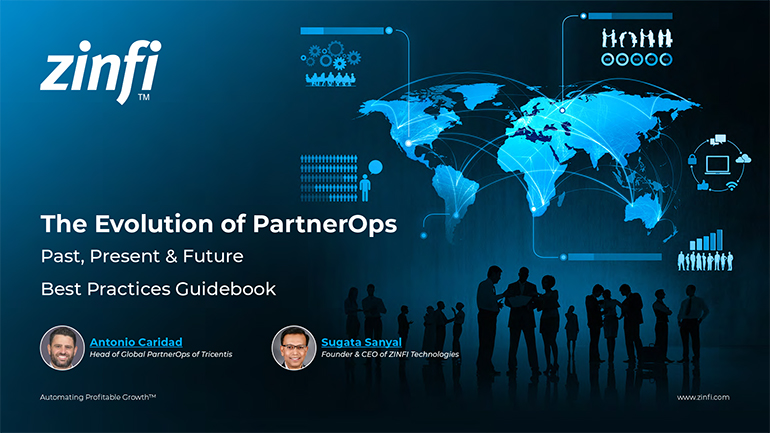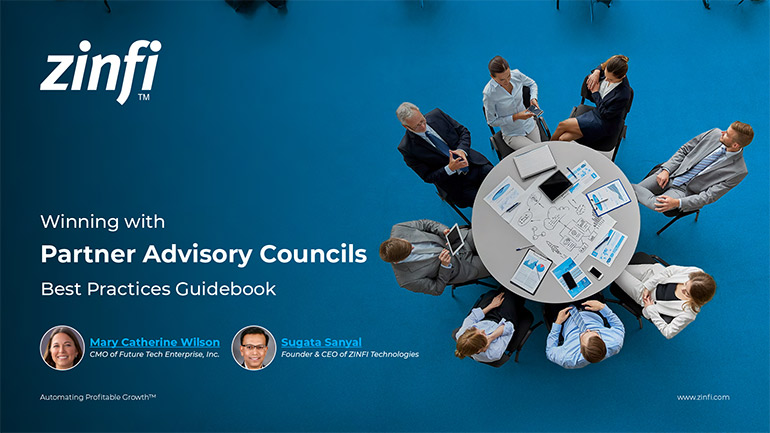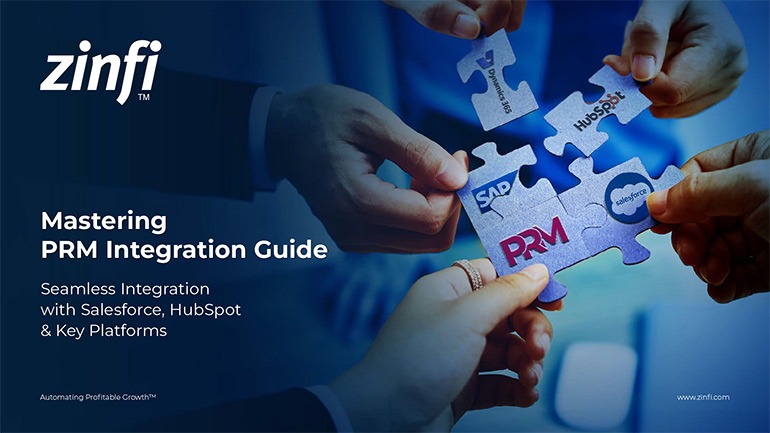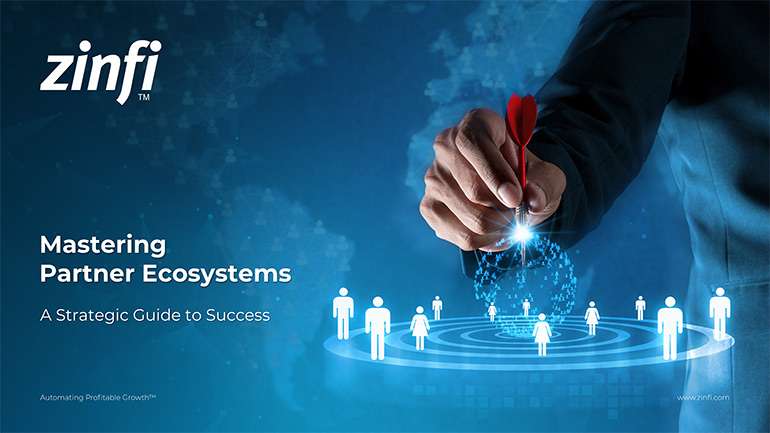Introduction
Channel management is complex primarily because of what it tries to manage. The word “management” implies some level of control to achieve performance from an individual or from a team, either through inspiration or through some level of enforcement. The meaning of “management” varies greatly when it comes to an organization’s structure—depending on whether it’s a startup, a more mature company, or a governmental organization like the military. However, in every one of those instances, there is a direct relationship between the manager and the subordinate employee or team member. In the case of a reseller network or a partner network, that relationship is very different, and it presents some unique challenges. Let’s take a moment to explore those challenges.
Challenges
- Channel partners are companies, not people. Ordinarily when we talk about management, where there is some level of control over employees, consultants, or contractors, we are exerting some level of control over people. But when we talk about managing a channel, the level of control is much lower: first of all, because it’s an indirect sales force and, second, as I’ve already noted, we’re managing companies, not people. Of course, those companies are made up of people — salespeople, technical people, marketing people—but in the end we’re trying to manage an entity rather than individuals. That’s an important difference that creates a huge amount of complexity.
- Channel partners do not report to vendors. In the case of a direct sales force, there is a hierarchy. You have a manager who reports to a director who may report to a VP, but with a channel organization, you have a company reporting to a channel account manager or a partner business manager. That reporting relationship is indirect. If some partners don’t perform over one, two, or three quarters, they don’t get fired for missing their mark. They may miss some incentives, but they don’t get fired for poor performance. Eventually, if a partner doesn’t perform over a long period of time, that partner may be replaced, but it doesn’t happen as quickly as it would when you’re managing a direct sales force.
- Channel partners have their own priorities. The challenge here is that those priorities do not necessarily align with the priorities of a vendor. If a vendor is trying to promote a specific product or trying to penetrate a specific market—say, verticals like manufacturing or healthcare or whatever–it may or may not be in the interest of the partner to carry out those activities. So it’s crucial for the organization to understand what the priorities of those partners are instead of randomly pushing programs and deploying resources.
- There are different types of partners, and they require different engagement models. Some partners sell to small and medium-sized businesses (SMBs), some partners sell to midmarket organizations, some sell to enterprises and some sell to all or a combination of two or more segments. For an organization to align behind the needs of various types of partners, have appropriate programs, and make them meaningful requires a significant level of thinking and homework which, a lot of times, companies skip. Therefore, many of the initiatives that are rolled out in the channel don’t really have an impact. In addition to differences in types of partners—what we might call practices or areas of focus—there are also differences in relationships based on revenue. Partners who are larger—larger in the sense that they carry a bigger portion of a vendor’s revenue—tend to be more important to the vendors than those partners who don’t carry a lot of products. Aligning the appropriate level of resources with high-velocity and high-volume partners vs. low-velocity, low-volume partners is critical, and that can make channel management quite complex.
- A partner’s loyalty is driven by financial motives. Just like in a startup environment, where people may be partly motivated by a belief in a cause or inspiration but are ultimately driven by the prospect of financial gain, most of the time the relationship between a partner and a vendor is fundamentally driven by financial gain. If the path toward that financial gain is not clearly defined, it can cause a lot of friction. Similarly, if the expectations change or are realigned with respect to an initiative, that can create complexity.
- Partner success depends on their competencies in an ecosystem. Very rarely does a partner—especially in the technology or solution domain—sell only one product. So, for example, if a partner is selling to the construction industry, the technology sector, manufacturing, or other areas of high tech, that partner may carry two, three, four, or as many as 50 different vendors. A partner’s competencies play a big role in determining its interest in a specific set of solutions. Understanding that and aligning those competencies is critical for success. One last point: While many companies have alliance programs, and they tend to apply them to solution selling, they do not apply much to franchise or retail businesses. Therefore, if an organization is addressing those types of markets, the level of complexity can be quite high.
- Forecasting is very hard when it comes to run rate and large-deal businesses. One of the major challenges in channel marketing is developing forecasts, especially if a company is growing. In cases where there is a revenue business, and the revenue doesn’t change much from quarter to quarter—which may be the typical scenario with retail and franchises—it’s relatively easy to predict within a few percentage points what the demand is going to be. However, if the economy is in distress, or certain product categories are growing faster, one of the big challenges is to work with the partner base and come up with a forecasting model. This is where understanding various types of partners, their own sales velocity, and the mix behind that velocity is critical. Without proper systems and processes in place, it is incredibly difficult for vendors to come up with these forecasts.
These seven major channel management challenges are common across every type of channel. Of course, there are other types of challenges that may be very specific to a market segment or a country. However, if these seven challenges are not addressed consistently in each market in which a vendor participates, the maturity of the channel and the realization of the potential may vary greatly.
So let’s talk a bit about the solutions for overcoming these challenges when it comes to channel management.
Solutions
- A structured channel program. Every company needs a structured channel program. It may not be a single program but a set of programs aligned behind different types of partners—by their verticals, their competencies, their sales mix, by their location: different strokes for different folks. Thinking that through in a systematic way can reduce a lot of waste and frustrations for both parties involved as you try to grow your business.
- Ease of doing business – doing less to get more done via the channel. Ease of doing business comes up as a major factor when it comes to channel management on both the partner side and the vendor side. Often the account manager ends up spending an enormous amount of time fielding emails, phone calls, etc. from partners. That problem can be addressed through a proper structure. That may mean sales concierges or partner marketing concierges, or it can be a combination of inside, outside, and field support, but thinking through that structure and optimizing the productivity of the organization is critical. Many times when smaller organizations get acquired by larger ones, by default the larger organization tends to roll the acquired organization into their existing structure, and even though on the surface this integration may make sense, in reality, a lot of the supporting infrastructure that was actually working and making the smaller entity successful falls apart. This is why a lot of acquisitions that occur in the technology space don’t realize their potential, because when it comes to ease of doing business, that structure gets changed dramatically.
- Systems for partner relationship management and partner marketing management. While enterprise resource automation—as well as sales force automation and more recently marketing automation—has been around for a while, very few companies have deployed structured systems when it comes to partner relationship management and partner marketing management. With a little bit of investment and structure in this area, a company can realize significant returns and reduce labor costs, increase ease of doing business, and create a structure around its
channel programs. This leads to my fourth point:
- Program alignment – training, product promotions, incentives. When we think about partner training, product promotions, incentives related to rewards, rebates, market development funds and so on, it is very important to think through these programs in a systematic way. Throwing out a bunch of incentives just for the sake of doing it—we see it all the time: $100 rewards for certain activities, $1,000 prizes, opportunities to win an iPad—really doesn’t make a lot of sense for partners. That’s because, fundamentally, if the incentives are not aligned with selling a product or service, they will not go the extra mile for the sake for winning an iPad or whatever. But when programs are aligned and a channel is performing, it’s a different story, which leads to my last solution:
- Celebrate success – make it fun. Many vendors do have annual partner conferences where they award a premier partner or two or perhaps more across certain categories. That is incredibly important, and it’s quite common. But it’s not enough. For a channel to maintain its energy and its direction and its commitment, it needs continuous management through celebration of success. Sales is a competitive sport. Making it fun, making it relevant and allowing the partners—especially when it comes to the individual (sales reps, marketing folks, technical people)—celebrating success by sharing good news, by touting the fact they have done something tangible for a specific vendor by posting on social media or through other channels, can have a profound impact and create excitement.
As we have seen, while channel management has the potential to be complex, when it is done right it becomes a huge competency. That’s why companies strive towards building a channel network that can really help them increase their reach, reduce their costs, increase productivity, provide better support to the end customer and therefore increase satisfaction rates, and create a powerful “stickiness” through distribution. That may prevent competitors from attaining the same level of sales velocity and mix.
Frequently asked questions
+ What are the different types of channel partners?
There are many different types of channel partners, but some of the most common include:
- Value-added resellers (VARs): VARs sell and support complex IT solutions. They typically have a deep understanding of their customers' needs and can provide customized solutions.
- System integrators (SIs): SIs design, implement, and maintain complex IT systems. They typically work with large enterprises and government agencies.
- Managed service providers (MSPs): MSPs provide ongoing IT support and management services to businesses of all sizes.
- Distributors: Distributors sell products and services to resellers and other channel partners. They typically have a large inventory of products and can provide quick delivery.
- Retailers: Retailers sell products and services directly to consumers. They typically have a physical or online store where customers can purchase products.
+ How can I improve the ease of doing business with my channel partners?
There are a number of things that vendors can do to improve the ease of doing business with their channel partners, including:
- Provide easy access to information and resources. Partners should be able to easily find the information and resources they need to sell your products and services, such as product information, pricing, and training materials.
- Make it easy for partners to do business with you. This includes things like having a streamlined ordering process, providing timely support, and offering competitive pricing.
- Invest in partner marketing and training. Help your partners to sell your products and services more effectively by providing them with marketing and training resources.
- Build relationships with your partners. Get to know your partners and their businesses. This will help you to better understand their needs and develop programs that are relevant to them.
+ How can I align my channel programs with my partners' priorities?
There are a few key things that vendors can do to align their channel programs with their partners' priorities:
- Understand your partners' priorities. What are your partners trying to achieve? Once you understand their priorities, you can develop programs that help them to achieve their goals.
- Make your programs relevant. Your channel programs should be aligned with your partners' product and service offerings, as well as their target markets.
- Make your programs profitable. Your channel programs should be profitable for your partners. This means offering them attractive incentives and discounts.
- Communicate with your partners. Keep your partners informed about your channel programs and any changes that you are making.


























